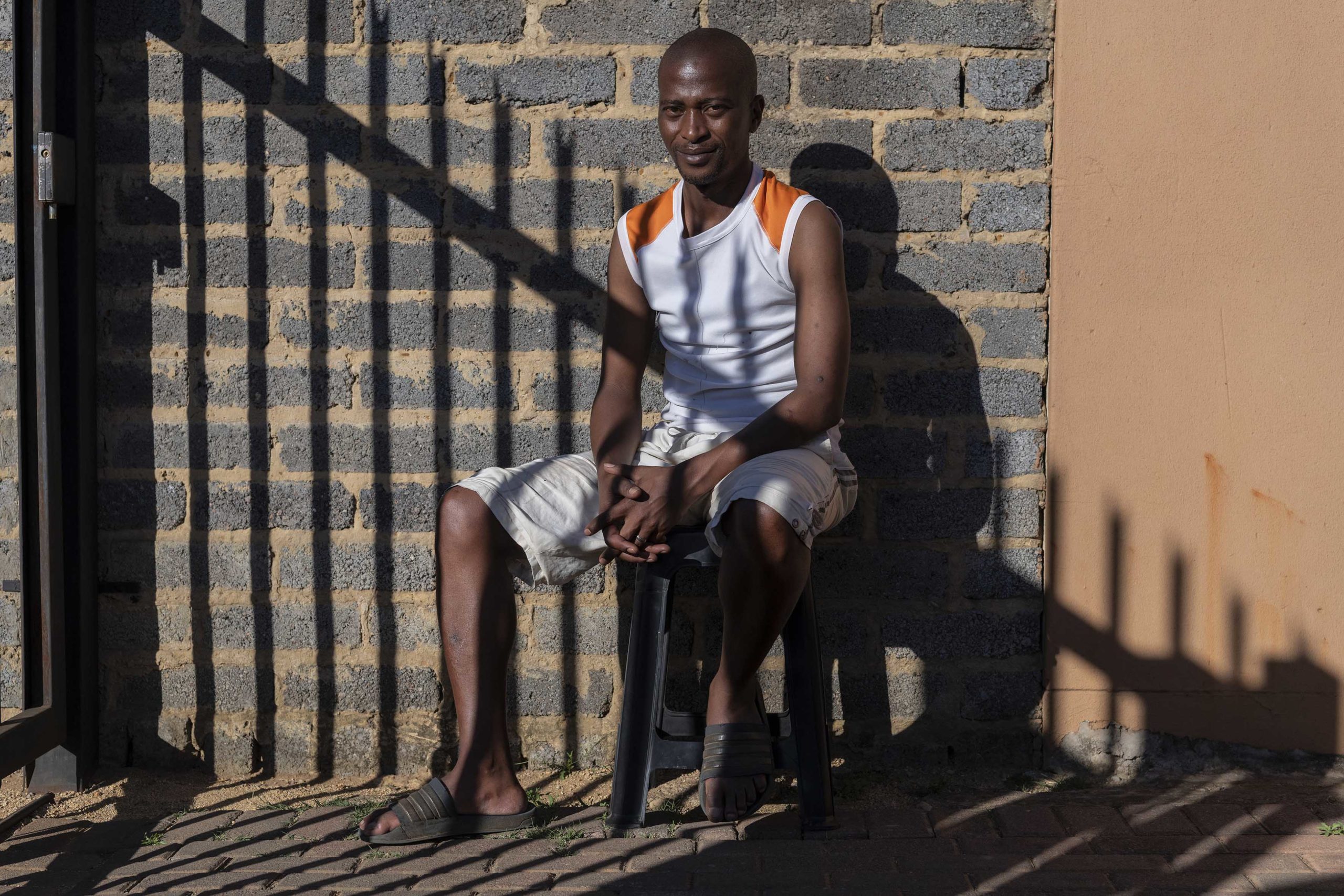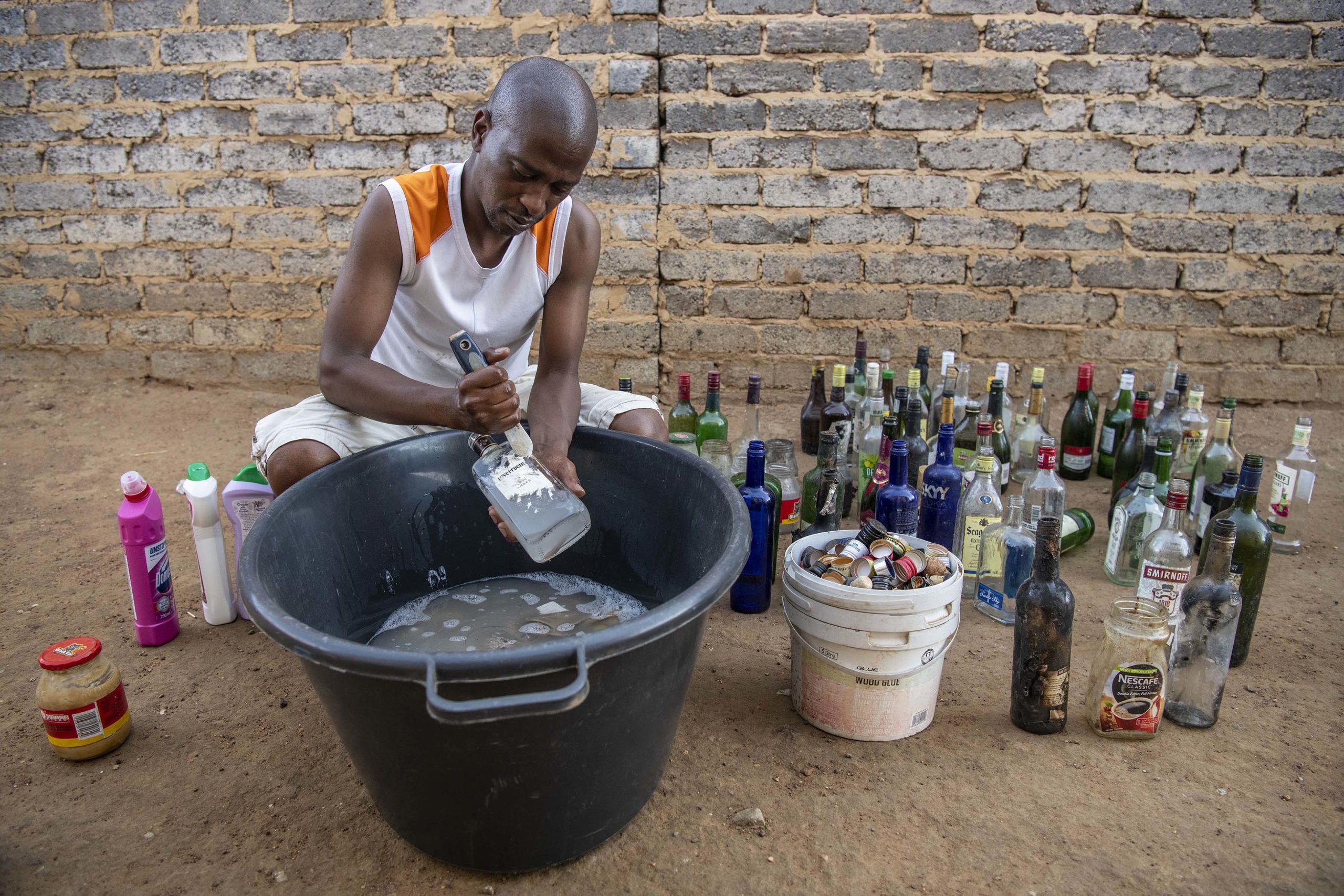Tseko Monyamane turns his art into a business
The artist’s unique creations made from wool and discarded glass bottles gained a following this year. Now he has his sights set on filling homes with his eco-friendly decor.
Author:
23 December 2021

Tseko Monyamane is taking his passion to the next level. The 37-year-old from Vanderbijlpark, who turns discarded bottles into colourful home decor, registered Monyamane Crafts as a business in September.
For R200, buyers get three beautifully designed bottles in a cohesive colour scheme. He decided on a set of three to give customers the option “to play around” when decorating their homes. “At first, I used to mix colours without knowing what the clients would want. But now, I design according to the colours which must match furniture, sofas, mats, tiles and wall colours.”
It takes him three days on average to complete a set, and he makes about 40 sets a month.

Monyamane picked up the habit of reusing from his mother and grandmother, who would repurpose things rather than throw them away. “I didn’t realise [what I was picking up back then], but it comes to my mind now, we can recycle everything… Let me say, my calling is on the bottles.”
With no formal training in creative art, Monyamane used social network platforms such as YouTube, Facebook and Pinterest for inspiration and to develop his craft. “There was no one I could ask for advice, doing what I do. I taught myself everything.”
Artistic side-hustle
On a Saturday afternoon, various bottles are lined up outside his house to be washed. Without revealing any trade secrets, Monyamane demonstrates how he makes his products. The dirty bottles, many still brandishing their labels, are washed in a basin with water and detergent, then soaked overnight in water. He takes a clean bottle and marks it using a sewing tape measure, before applying glue and wrapping it in wool.
“To wrap one bottle takes 45 minutes, then I wait 24 hours for it to dry. The next day is the washing process and decorating it with beads, flowers or buttons,” he says.

Because Monyamane works as a librarian assistant during the week at North-West University, he works on his craft when he returns home, until around midnight. “On the weekends, sometimes I sleep in the morning.” He also uses the weekends for deliveries and to buy materials.
“I was inspired by mam’ Esther Mahlangu, how she mixes colours, and I decided to use wool.
“Every day, I check for new ideas,” says Monyamane, whether creative inspiration or the latest developments in recycling. “I collect them [bottles] at the dumpsite or whenever I come across any nice bottles. Some clients are also owners of taverns, they bring me some bottles.”
Reprocessed materials
The dumpsite where he collects his bottles is 4km from his home. At first, Monyamane felt embarrassed to search there. But today, he says, he no longer feels ashamed at the work he does.
Not everything is trash, he says. Seeing the final product of the discarded bottles is a testament to this. “We must save our environment.”

Andrew Tomita and Rob Slotow wrote about the growing number of landfill sites and related health risks on The Conversation website in 2020: “The recycling of waste to recover and then reprocess materials into new products, when this doesn’t hurt the environment, can provide economic benefit. The type of economic system that aims to eliminate waste and the continual use of resources, known as a circular economy, can help to reduce the amount of landfill waste and contribute towards sustainable development.”
The scholars warned of health complications as landfill sites increase in number. “We also found from our analysis that people living within 5km of a waste site were at a higher risk of certain conditions. We calculated that this population had a 41% higher risk of asthma, an 18% higher risk of developing tuberculosis, a 25% higher chance of having diabetes and an 8% greater chance of having depression compared with those who lived further than 5km from a waste site.”
In one of the proposed resolutions, the pair said: “It’s necessary to reduce the amount of waste and number of sites through more aggressive recycling.”
The start of a legacy
Monyamane quotes environmental health expert Gina McCarthy when asked about the role his work plays in contributing to a cleaner environment: “At its core, the issue of a clean environment is a matter of public health.” He adds, “My work is based on recycling and also to care for our environment. Before we throw anything away, let us think [and] so save the planet.”
He has big dreams for Monyamane Crafts. His objective is “to be [an] established business and supply even bigger shops, if the opportunity comes”.

But more than that, Monyamane wants to build a legacy.
“At the moment, I sell according to orders placed by different clients. I used to supply a furniture store, but they have moved.” He also had the opportunity to display his work at Vaal Mall when offered a free weekend booth in celebration of Heritage Month. And a customer in Mozambique saw and liked Monyamane’s work on social media, and has since placed two orders.
Ultimately, Monyamane treasures art. “Art calms me down, speaks to my soul, and some colours remind me God brought me to this world with purpose. Seeing happy faces from my clients is a bonus,” he says.
